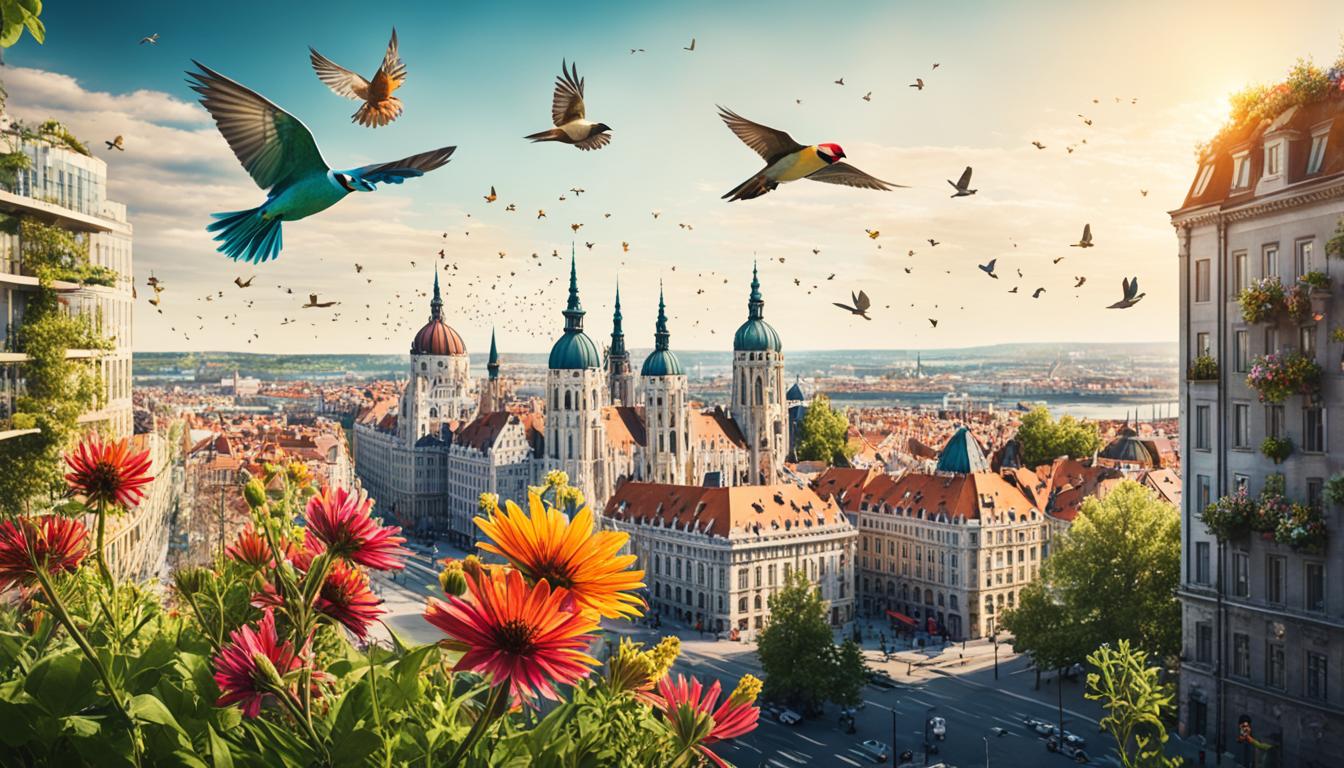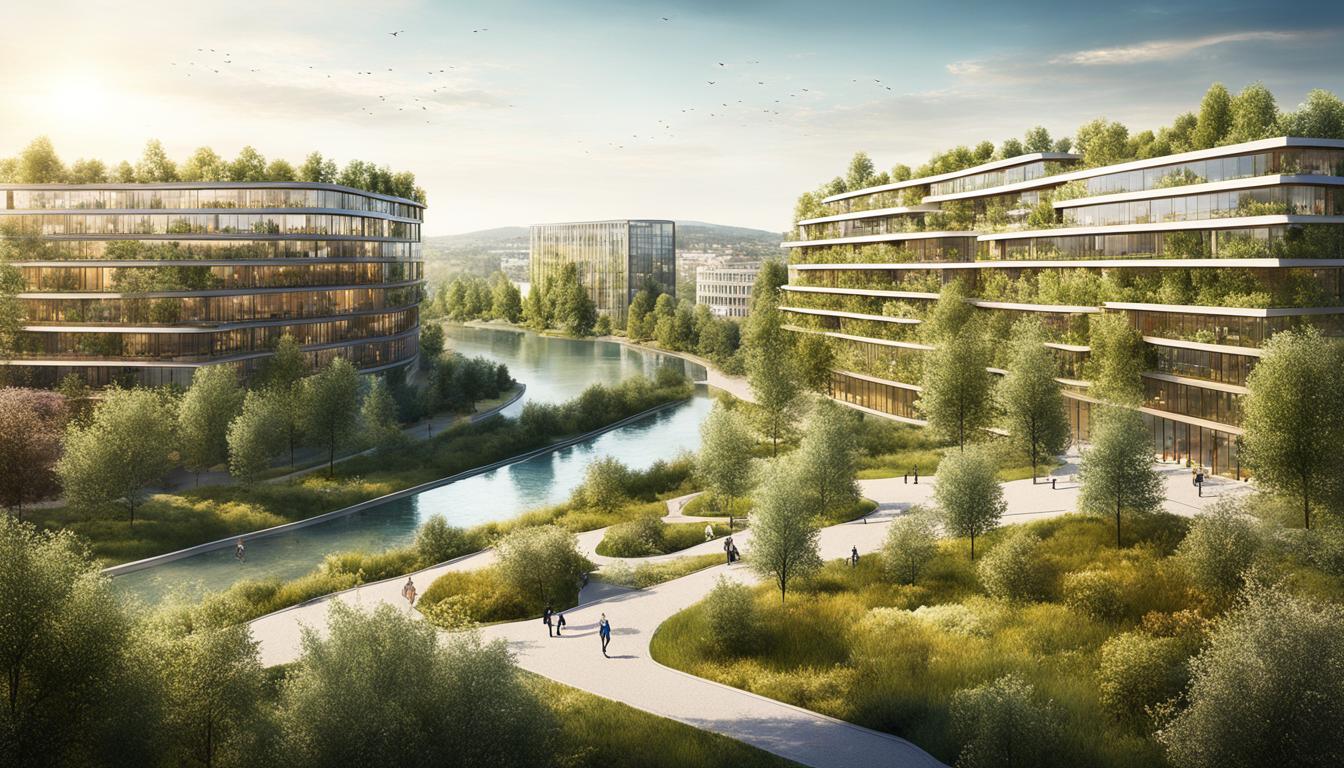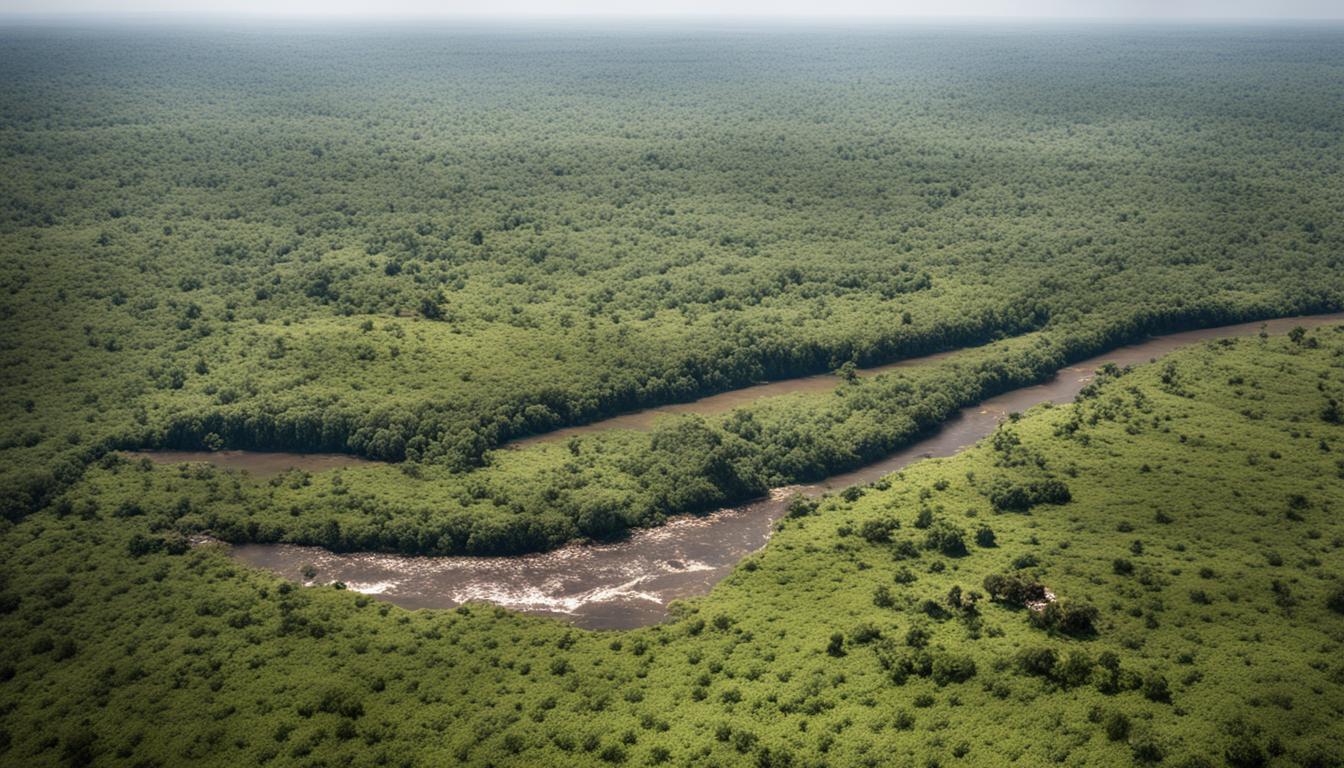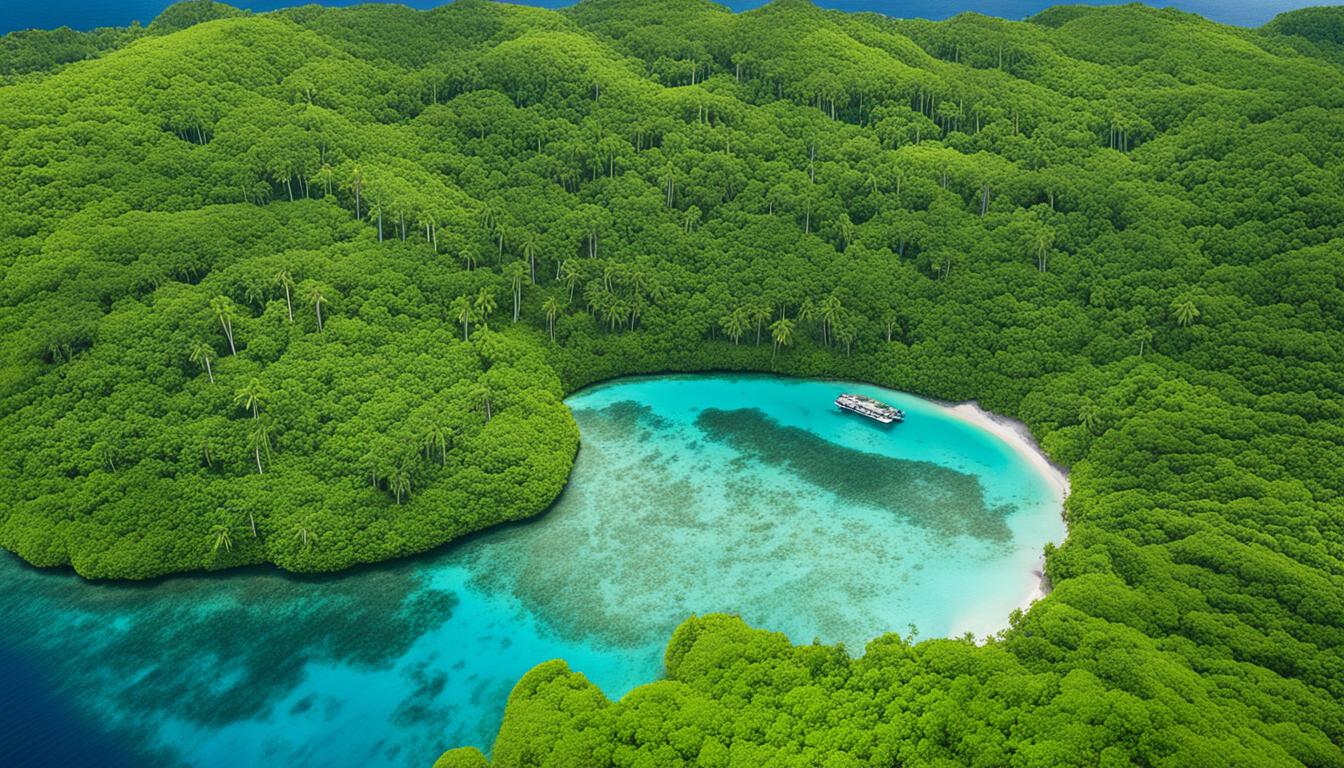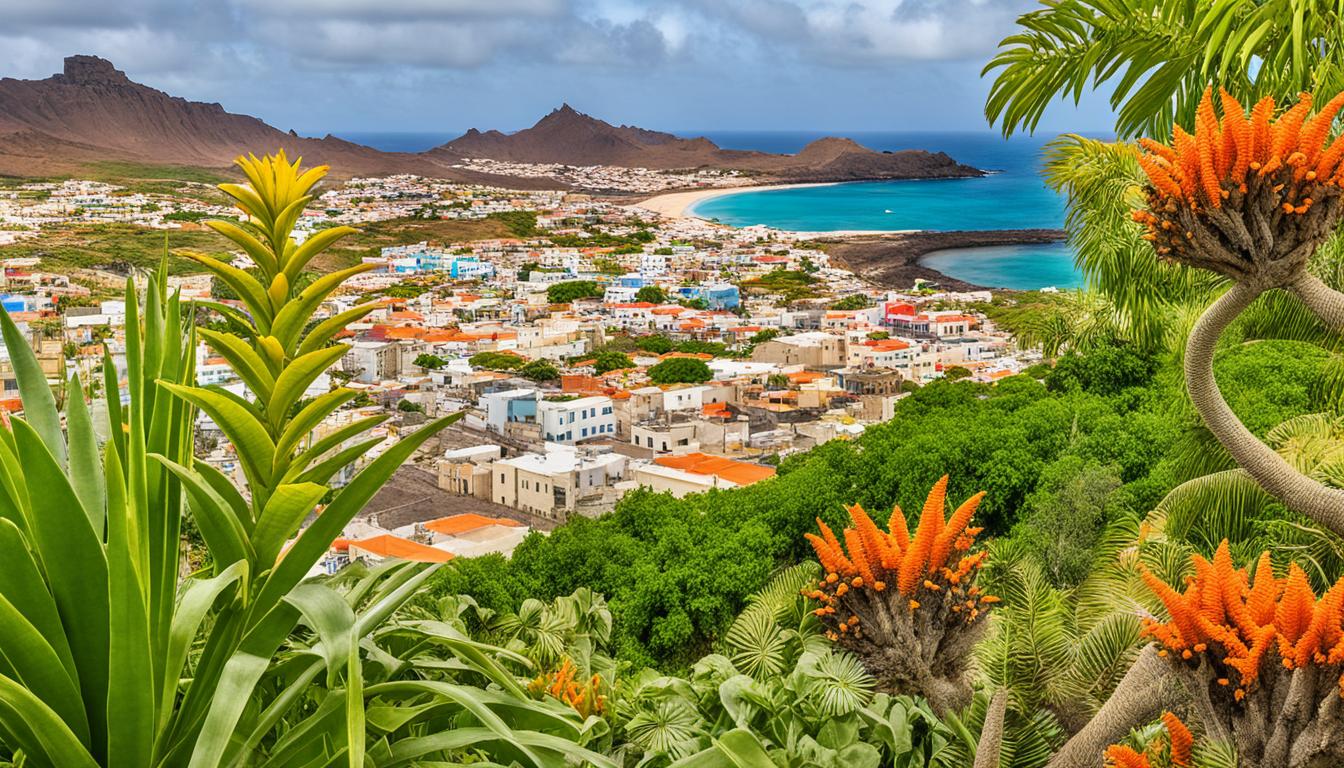Iceland Biodiversity and the Built Environment
Did you know that Iceland, a country known for its stunning natural landscapes and ecological wonders, is also a global leader in sustainable urban planning and biodiversity conservation? Despite its isolated location and harsh climate, Iceland has made remarkable strides in protecting and preserving its unique natural habitats. Through the implementation of green infrastructure and landscape architecture, the country has found a way to harmonize biodiversity with the built environment for a sustainable future.
Key Takeaways:
- Iceland is renowned for its commitment to environmental sustainability, particularly in the areas of urban planning and biodiversity conservation.
- The country’s limited biodiversity is characterized by its isolated location, harsh climate, and limited endemic species.
- Iceland has implemented green infrastructure and landscape architecture to protect and conserve its natural habitats.
- Sustainable land use practices, renewable energy utilization, and responsible agricultural methods contribute to Iceland’s efforts in biodiversity preservation.
- The country’s comprehensive nature conservation policy framework and institutional responsibilities ensure the implementation of effective conservation strategies.
The Importance of Biodiversity in Iceland
Although Iceland’s biodiversity is relatively low compared to other countries, it plays a crucial role in maintaining ecological balance and supporting the survival of unique species. The country’s diverse flora and fauna contribute to the overall health of ecosystems, from wild terrestrial mammals to bird life, freshwater fish, invertebrates, reptiles, amphibians, and marine life.
Icelandic biodiversity encompasses a wide range of species that have adapted to the country’s unique environment. These species not only contribute to the ecological balance but also showcase the resilience and adaptability of nature in extreme conditions.
To preserve the importance of biodiversity in Iceland, conservation efforts are paramount. The Icelandic government has implemented nature conservation policies and established protected areas to safeguard the country’s natural habitats and species diversity. These initiatives aim to ensure the long-term survival and sustainability of Iceland’s biodiversity.
Protecting and conserving Icelandic biodiversity is not only an ethical responsibility but also crucial for maintaining ecological harmony and preserving the beauty and uniqueness of the country’s natural heritage.
The Role of Conservation Efforts
Conservation efforts in Iceland focus on protecting and restoring key habitats, promoting sustainable land use practices, and raising awareness about the importance of biodiversity. Through these efforts, Iceland aims to enhance ecological balance, prevent species extinction, and maintain the overall health of its ecosystems.
One notable example of conservation efforts is the establishment of protected areas such as national parks, nature reserves, and wildlife sanctuaries. These areas provide a safe haven for native plants, animals, and unique species found only in Iceland.
The Ecological Balance
Ecological balance is crucial for the survival of all living organisms and the proper functioning of ecosystems. In Iceland, the delicate balance between species and their habitats is essential for maintaining the country’s biodiversity and ecological stability.
Each species in Iceland’s ecosystem holds a specific role and contributes to the overall balance. For example, birds play a vital role in seed dispersal, pollination, and controlling insect populations. Meanwhile, marine life, such as whales and seals, contribute to nutrient cycling and maintaining healthy ocean ecosystems.
Diverse Ecosystems of Iceland
Iceland’s diverse ecosystems, including forests, wetlands, lakes, rivers, and coastal areas, provide a home for a wide variety of species. These ecosystems support the life cycles of plants, animals, and microorganisms, enhancing biodiversity and ecological resilience.
Forests, although relatively scarce in Iceland, are essential for preserving biodiversity. They provide habitats for a range of plant and animal species and contribute to carbon sequestration, soil stabilization, and water regulation.
Coastal areas and wetlands are particularly important for migratory birds, offering breeding grounds, feeding areas, and shelter during their long journeys. These habitats are also home to various fish species, invertebrates, and other marine life.
Challenges to Biodiversity in Iceland
Iceland, with its unique ecological environment, faces various challenges that threaten its biodiversity. These challenges include soil degradation, vegetation loss, overgrazing, erosion, and habitat destruction.
Soil degradation poses a significant threat to Iceland’s biodiversity. Due to the country’s harsh climate and geological conditions, the soil is susceptible to erosion and nutrient depletion. This degradation negatively impacts plant growth and disrupts the delicate balance of ecosystems.
Vegetation loss is another pressing issue. The loss of plant species and their habitats disrupts food chains and reduces the overall diversity of Iceland’s ecosystems. As a result, many endemic and specialist species are at risk of extinction.
Overgrazing by sheep exacerbates these challenges. The high population of sheep and their extensive grazing activities contribute to the loss of vegetation cover, particularly in fragile areas. This overgrazing hinders the natural regeneration of plants and disrupts the growth of new vegetation.
Erosion, both wind and water-induced, further compounds the problem. The erosion of topsoil not only leads to the depletion of nutrients but also increases the shedding of sediments into rivers and lakes, negatively impacting aquatic ecosystems and the wildlife dependent on them.
Habitat destruction is yet another challenge faced by Iceland’s biodiversity. It is estimated that 95% of the country’s original birch woodlands have been lost due to human activities and natural processes. This loss of habitat directly affects the survival and abundance of many plant and animal species.
The Icelandic Soil Conservation Service plays a vital role in combating soil erosion and implementing measures to protect vulnerable areas. However, further efforts are necessary to promote sustainable land use practices and mitigate the threats to Iceland’s biodiversity.
“The challenges of soil degradation, vegetation loss, overgrazing, erosion, and habitat destruction demand immediate action to safeguard Iceland’s unique ecosystems and preserve its biodiversity.” – Icelandic Soil Conservation Service.
Sustainable Land Use and Biodiversity Conservation
Sustainable land use practices are crucial for safeguarding Iceland’s biodiversity. By adopting sustainable agricultural methods, implementing responsible grazing practices, and promoting reforestation initiatives, Iceland can mitigate the challenges and ensure the long-term viability of its ecosystems.

| Challenges | Impacts |
|---|---|
| Soil Degradation | Nutrient depletion, disrupts ecosystems |
| Vegetation Loss | Reduces biodiversity, threatens endemic species |
| Overgrazing | Loss of vegetation cover, inhibits natural regeneration |
| Erosion | Depletion of nutrients, impacts aquatic ecosystems |
| Habitat Destruction | Loss of birch woodlands, impacts plant and animal species |
Sustainable Land Use and Planning in Iceland
Iceland has embraced sustainable land use practices and environmental planning to protect its natural resources and promote biodiversity conservation. The country’s land use is primarily focused on animal husbandry and limited agriculture, with strict regulations in place to prevent habitat destruction. Urban development in Iceland prioritizes the integration of green infrastructure, including parks, gardens, and green roofs, to enhance biodiversity and create sustainable urban environments.
By implementing sustainable land use practices, Iceland ensures that its natural resources are utilized responsibly while preserving the ecological balance. The country recognizes the importance of land conservation in preserving biodiversity and maintaining healthy ecosystems. Through thoughtful planning and strict regulations, Iceland mitigates the negative impacts of land development and promotes the preservation of natural habitats.
Urban development in Iceland incorporates green infrastructure as an essential component. The integration of parks, gardens, and green roofs in urban areas not only provides a pleasant environment for residents but also enhances biodiversity. These green spaces serve as habitats for various plant and animal species, promote ecological connectivity, and help regulate temperature, air quality, and stormwater runoff.
Examples of Green Infrastructure in Icelandic Cities
Reykjavik, the capital city of Iceland, is renowned for its commitment to sustainable urban development and green infrastructure. The city has numerous parks and green spaces, such as the popular Klambratún Park, which provides recreational opportunities for residents and visitors. The park’s abundance of trees, shrubs, and flowers creates a vibrant ecosystem and supports native wildlife.
Another notable example is the Perlan building in Reykjavik, which features a unique glass dome and a rooftop garden. This iconic landmark not only offers panoramic views of the city but also serves as an educational center focusing on Iceland’s natural wonders. The rooftop garden showcases Iceland’s native plants and provides a serene urban oasis.
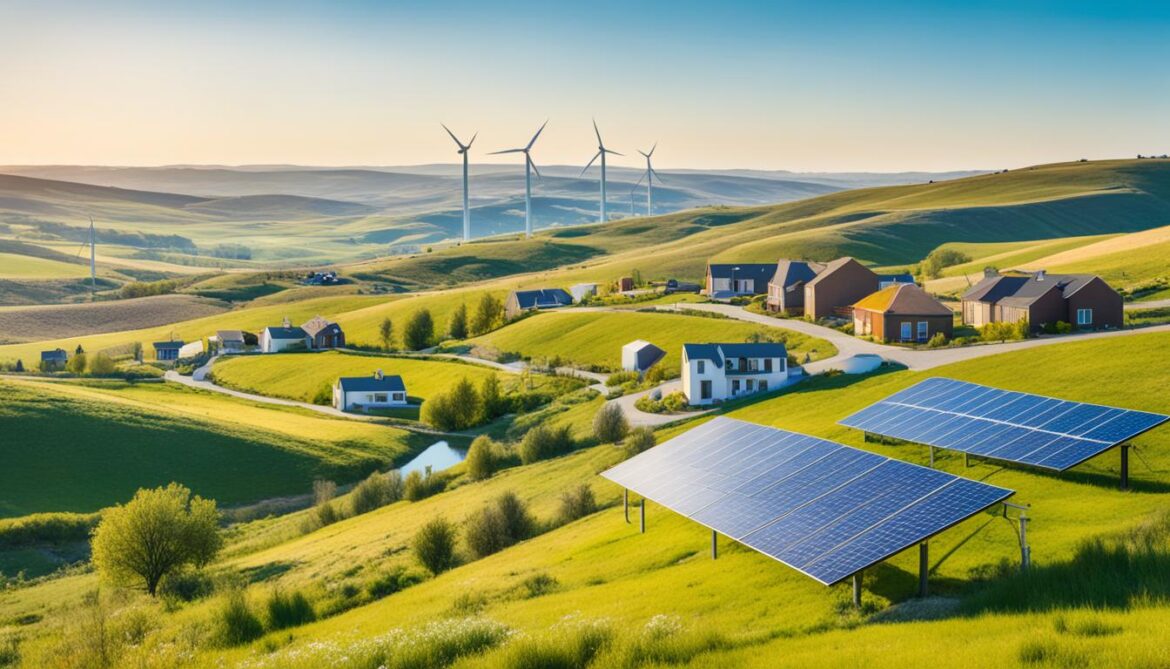
The Benefits of Sustainable Land Use and Green Infrastructure
Sustainable land use practices and green infrastructure offer numerous benefits for both the environment and communities. Some of the key advantages include:
- Biodiversity Conservation: Protecting natural habitats through sustainable land use and integrating green spaces in urban areas helps preserve biodiversity and maintain healthy ecosystems.
- Improved Air and Water Quality: Green infrastructure, such as trees and vegetation, helps reduce air pollution and filters stormwater, improving water quality.
- Climate Change Mitigation: Sustainable land use practices and green infrastructure contribute to climate change mitigation by sequestering carbon dioxide and reducing the urban heat island effect.
- Enhanced Quality of Life: Access to green spaces promotes physical and mental well-being, providing opportunities for recreation, relaxation, and connection with nature.
- Social and Economic Benefits: Sustainable land use and green infrastructure can attract investment, enhance property values, and create jobs in sectors such as landscaping, urban agriculture, and eco-tourism.
Comparing Sustainable Land Use Practices
| Land Use Practice | Benefits |
|---|---|
| Animal Husbandry | Promotes sustainable food production and preserves rural livelihoods |
| Limited Agriculture | Protects soil fertility, reduces pesticide use, and minimizes habitat destruction |
| Green Infrastructure | Enhances biodiversity, improves air and water quality, and creates sustainable urban environments |
“Sustainable land use and green infrastructure are key elements in ensuring the long-term ecological health and sustainability of Iceland. These practices not only protect our natural resources but also create livable and resilient communities.” – Birna Hrönn Björnsdóttir, Environmental Planner
Renewable Energy and Biodiversity in Iceland
Iceland has emerged as a global leader in renewable energy, harnessing its abundant geothermal activity and hydro power to meet the country’s electricity and heating demands. This commitment to renewable energy sources aligns with Iceland’s sustainability goals and the global shift towards clean, green energy solutions.
However, it is important to acknowledge that the development and use of renewable energy can have certain environmental impacts, including effects on biodiversity. Iceland’s unique ecosystems and natural habitats can be sensitive to changes caused by energy production.
Despite these challenges, Iceland has implemented measures to carefully balance the use of renewable energy with its commitment to biodiversity conservation. The country has adopted environmental impact assessments (EIAs) as part of its energy development process, ensuring that projects are thoroughly evaluated for potential ecological effects.
Furthermore, Iceland places strict regulations on the construction and operation of renewable energy facilities to mitigate potential negative impacts on natural habitats and wildlife. These regulations aim to protect sensitive areas and ensure that renewable energy projects are designed and managed in an environmentally responsible manner.
The Icelandic government also actively supports research and monitoring programs to understand the long-term effects of renewable energy development on biodiversity. These initiatives contribute to the ongoing efforts to improve energy sustainability and minimize the environmental footprint of the renewable energy sector.
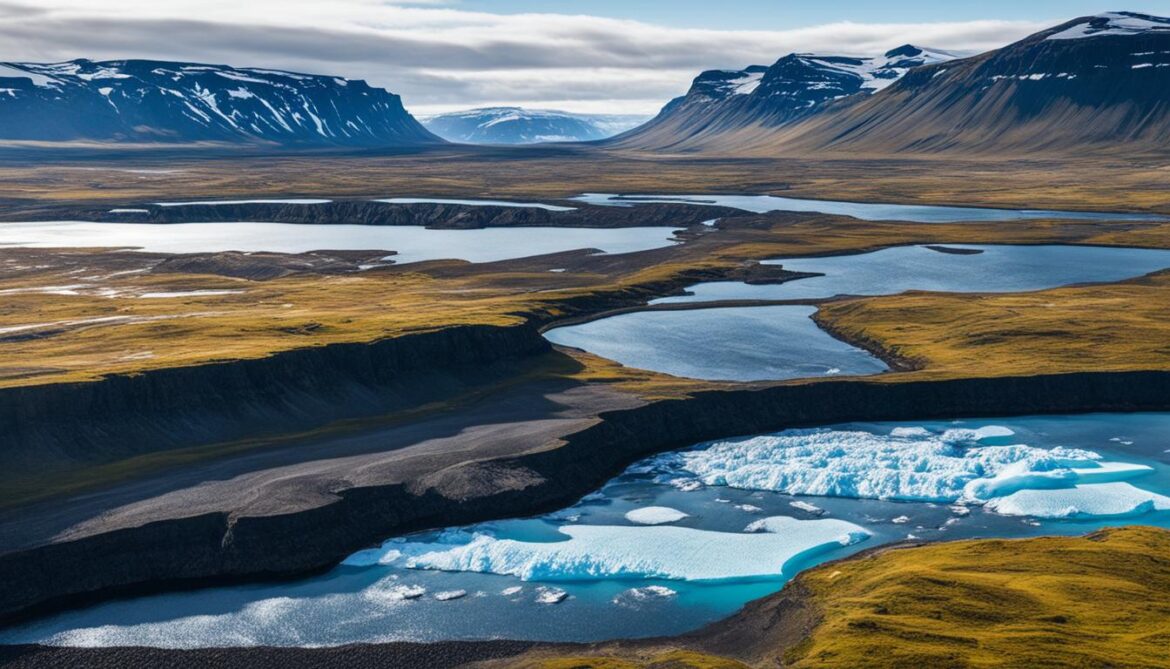
By striking a balance between renewable energy development and biodiversity conservation, Iceland exemplifies the importance of addressing the environmental implications of energy production. The country’s commitment to sustainable practices and ongoing research efforts pave the way for a future where renewable energy and biodiversity can coexist harmoniously, ensuring a sustainable and resilient ecosystem for generations to come.
Conservation of Marine Biodiversity in Iceland
Iceland’s marine environment is a treasure trove of diverse marine life, making it a vital component of the country’s rich biodiversity. From a multitude of fish species to fascinating invertebrates, the marine resources of Iceland are abundant and unique. To preserve these valuable resources, the country has embraced sustainable fishing practices, ensuring the long-term viability of its marine ecosystems.
Sustainable fishing practices are crucial for the protection and conservation of Iceland’s marine resources. By employing responsible methods such as quota systems, gear modifications, and selective fishing, Iceland aims to maintain the delicate balance of its marine environment. These practices reduce the impact on non-target species and minimize damage to their habitats. By focusing on sustainable fishing, Iceland aims to safeguard its marine resources for future generations.
Marine conservation efforts in Iceland go beyond sustainable fishing practices. The country has established marine protected areas, where specific regions are safeguarded to preserve their biodiversity and maintain the integrity of their ecosystems. These protected areas ensure the long-term survival of vulnerable species and provide a sanctuary for marine life to thrive.
Protecting Iceland’s marine resources is not only crucial for its biodiversity but also for the sustainable livelihoods of coastal communities. By practicing sustainable fishing and establishing marine protected areas, Iceland is leading the way in marine conservation and ensuring the continued well-being of its marine environment.
The Sustainable Use of Living Marine Resources
- Regulated fishing quotas
- Selective fishing methods
- Gear modifications
Establishment of Marine Protected Areas
- Preservation of biodiversity
- Protection of vulnerable species
- Conservation of marine ecosystems
Table: Marine Conservation Efforts in Iceland
| Conservation Measures | Benefits |
|---|---|
| Regulated fishing quotas | Prevents overfishing and maintains fish populations |
| Selective fishing methods | Minimizes bycatch and reduces negative impact on non-target species |
| Gear modifications | Reduces habitat damage and prevents accidental capture of protected species |
| Establishment of marine protected areas | Preserves biodiversity, protects vulnerable species, and maintains healthy ecosystems |

Nature Conservation and Policy Framework in Iceland
Iceland is dedicated to the preservation and protection of its rich biodiversity through a comprehensive policy framework and institutional responsibilities. The country has implemented a range of laws and regulations to safeguard its diverse ecosystems and promote sustainable nature conservation practices.
With a specific focus on the central highlands, marine resources, agriculture, forestry, and energy resources, Iceland’s biodiversity laws prioritize the conservation of key habitats and species. These regulations play a vital role in ensuring the long-term sustainability of Iceland’s natural environment.
In order to effectively implement these biodiversity laws, Iceland has established clear institutional responsibilities. Various government agencies and organizations are assigned specific roles and responsibilities to oversee the enforcement and monitoring of nature conservation efforts.
Implementation strategies are a crucial component of Iceland’s nature conservation approach. The country emphasizes the need for sustainable use practices, balancing human activities with the conservation of natural resources. By adopting monitoring and assessment measures, Iceland ensures the effectiveness of its nature conservation policies and takes proactive steps to mitigate any potential negative impacts on biodiversity.
“We believe that a strong policy framework and clearly defined institutional responsibilities are essential for the successful conservation of our precious natural heritage. Through effective implementation strategies, we can strike a balance between human needs and the protection of our biodiversity.”
To illustrate Iceland’s commitment to nature conservation, the table below highlights some of the key laws and regulations in place:
| Policy Area | Key Regulations |
|---|---|
| Central Highlands | Act on the Preservation of the Central Highlands |
| Marine Resources | Fisheries Management Act |
| Agriculture | Agricultural Land Preservation Act |
| Forestry | Forestry Act |
| Energy Resources | Master Plan for Conservation and Utilization of Energy Resources |
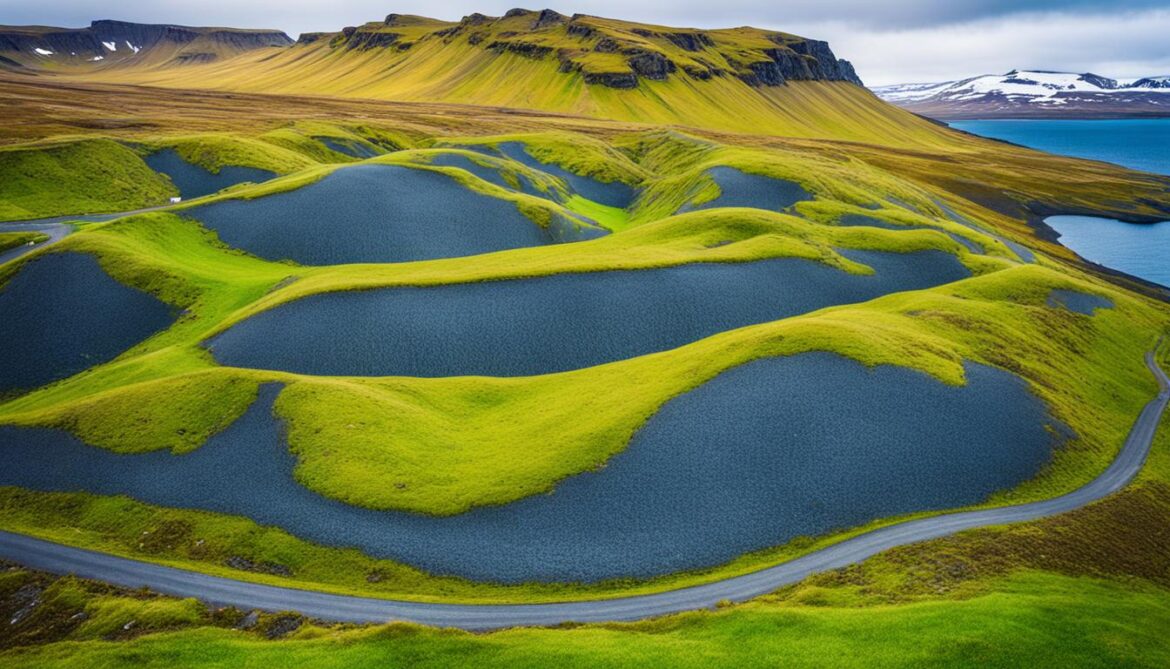
Sustainable Agriculture and Biodiversity in Iceland
Sustainable agriculture practices are crucial for maintaining biodiversity in Iceland. The country has made efforts to minimize the drainage of wetlands and promote responsible land use practices in agriculture. By adopting sustainable farming methods and preserving natural habitats within agricultural landscapes, Iceland aims to protect biodiversity and ensure the long-term sustainability of its agricultural sector.
Minimizing Wetland Drainage
In Iceland, wetlands play a vital role in supporting diverse plant and animal species. To preserve these important ecosystems, the country has implemented measures to minimize wetland drainage. By ensuring the conservation of wetlands, Iceland not only protects biodiversity but also maintains essential ecological functions, such as water filtration and carbon sequestration.
Promoting Responsible Land Use Practices
Iceland recognizes the importance of responsible land use practices in maintaining the balance between agricultural production and the preservation of natural habitats. The country encourages farmers to implement sustainable farming techniques that minimize soil erosion, enhance soil fertility, and reduce the use of chemical inputs.
| Sustainable Farming Methods | Benefits |
|---|---|
| Organic farming | Reduces chemical inputs, promotes soil health, and preserves biodiversity. |
| Crop rotation | Improves soil fertility, minimizes pest and disease pressure, and reduces the need for synthetic fertilizers. |
| Agroforestry | Integrates trees with agricultural crops, providing habitat for wildlife, improving water retention, and enhancing biodiversity. |
| Precision agriculture | Optimizes resource use, reduces environmental impact, and increases crop productivity. |
“Sustainable agriculture is essential for preserving biodiversity and ensuring food security. By adopting responsible land use practices and sustainable farming methods, Iceland is setting an example for the world.”
By prioritizing sustainable agriculture and biodiversity conservation, Iceland aims to create a resilient and thriving agricultural sector that coexists harmoniously with nature.
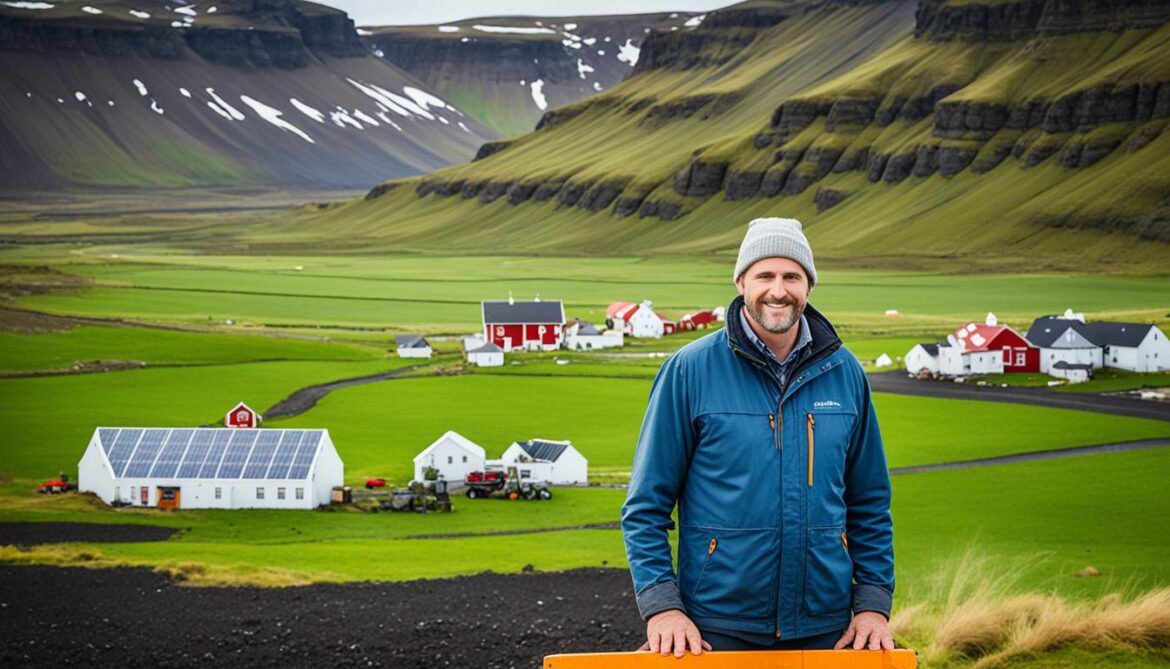
Forest Conservation and Biodiversity in Iceland
Forests are crucial for the conservation of biodiversity, playing a significant role in maintaining ecological balance. Recognizing this, Iceland has implemented various measures to protect and restore its forest ecosystems, promoting forest conservation and ecological restoration.
One of the key initiatives in Iceland is afforestation, the deliberate and planned establishment of forests in areas where there were previously none. Afforestation programs have been introduced to increase forest cover and enhance biodiversity. These programs involve planting trees and nurturing their growth, creating new habitats for a variety of plant and animal species.
Reforestation is another important strategy in Iceland’s forest conservation efforts. It involves replanting areas that have been deforested or cleared, restoring forests and their ecological functions. Reforestation helps to address the loss of forest cover, supporting the recovery of forest ecosystems and the species that depend on them.
Ecological restoration is a comprehensive approach to revitalizing degraded ecosystems. In the context of forest conservation, ecological restoration focuses on enhancing the health and functionality of forests, ensuring their long-term sustainability. It involves activities such as soil rehabilitation, reintroduction of native plant species, and the creation of wildlife corridors.
The Benefits of Forest Conservation
Forest conservation in Iceland brings numerous benefits, contributing to the overall well-being of both the natural environment and human communities. Some of the key benefits include:
- Biodiversity preservation: Forests provide essential habitats for a wide range of plant and animal species, helping to preserve biodiversity and support ecosystem stability.
- Carbon sequestration: Forests play a vital role in mitigating climate change by absorbing carbon dioxide from the atmosphere, helping to reduce greenhouse gas emissions.
- Soil protection: Forests help to prevent soil erosion, preserving soil fertility and preventing the loss of valuable topsoil.
- Water regulation: Forests act as natural water filters, helping to regulate water flow, improve water quality, and prevent floods and droughts.
- Aesthetic and recreational values: Forested areas provide beautiful landscapes and opportunities for outdoor recreation, improving the well-being and quality of life of local communities and visitors.
By prioritizing forest conservation, Iceland is taking significant steps towards creating a sustainable future, ensuring the preservation of its unique ecosystems and protecting the well-being of its people.

The Way Forward
Continued efforts in forest conservation, afforestation, reforestation, and ecological restoration are crucial for Iceland’s biodiversity. Through these initiatives, Iceland aims to enhance biodiversity, improve soil fertility, and mitigate the impacts of climate change.
With a holistic and sustainable approach to forest conservation, Iceland sets an example for other countries, demonstrating the importance of protecting and restoring forests for the benefit of both present and future generations.
Energy Resources and Biodiversity Conservation in Iceland
Iceland’s abundant energy resources, including geothermal and hydro power, have played a significant role in achieving sustainable development in the country. The utilization of these energy sources has enabled Iceland to reduce its reliance on fossil fuels and decrease greenhouse gas emissions, contributing to global efforts to combat climate change.
To ensure that energy development aligns with biodiversity conservation, Iceland has implemented a comprehensive master plan that takes into consideration the environmental impact and sustainability of renewable energy projects. This plan includes thorough environmental impact assessments, which evaluate the potential effects of energy projects on natural habitats and wildlife populations.
“The responsible development of renewable energy projects in Iceland ensures the coexistence of energy production and the preservation of natural habitats.”
Iceland’s commitment to environmental stewardship is exemplified by its approach to renewable energy development. The country takes proactive measures to minimize the ecological footprint of energy projects and mitigate any negative impacts on biodiversity. This includes careful site selection, utilizing existing infrastructure to minimize land disturbance, and implementing measures to minimize noise pollution and disturbances to wildlife.
Furthermore, Iceland’s renewable energy projects are designed to prioritize the long-term sustainability and biodiversity of the surrounding ecosystems. The integration of green infrastructure, such as wildlife-friendly corridors and restoration of surrounding landscapes, creates interconnected habitats that support a wide range of species and promote ecological balance.
With Iceland’s energy resources, the sustainable development of the country is made possible, contributing to its overall resilience in the face of environmental challenges. Through careful planning, environmental impact assessment, and a commitment to biodiversity conservation, Iceland demonstrates that sustainable energy production and the preservation of natural habitats can go hand in hand, paving the way for a greener and more sustainable future.
Conclusion
Iceland’s commitment to biodiversity conservation and sustainable development has positioned it as a global leader in ecological harmony and urban development. Through a careful combination of conservation efforts, sustainable land use practices, renewable energy utilization, and environmental planning, Iceland has achieved a harmonious relationship between biodiversity and the built environment.
By preserving natural habitats and implementing green infrastructure, such as parks, gardens, and green roofs, Iceland has created sustainable urban environments that not only enhance biodiversity but also provide a high quality of life for its residents. The country’s dedication to protecting its unique ecological environment paves the way for a sustainable future.
Iceland’s success in balancing urban development with the preservation of natural resources serves as an inspiration for other countries. Its comprehensive policy framework, institutional responsibilities, and implementation strategies ensure the effective conservation of biodiversity throughout the country. With its commitment to sustainability and the preservation of Iceland’s natural beauty, the nation is poised to lead the way towards a more sustainable and ecologically harmonious future.




